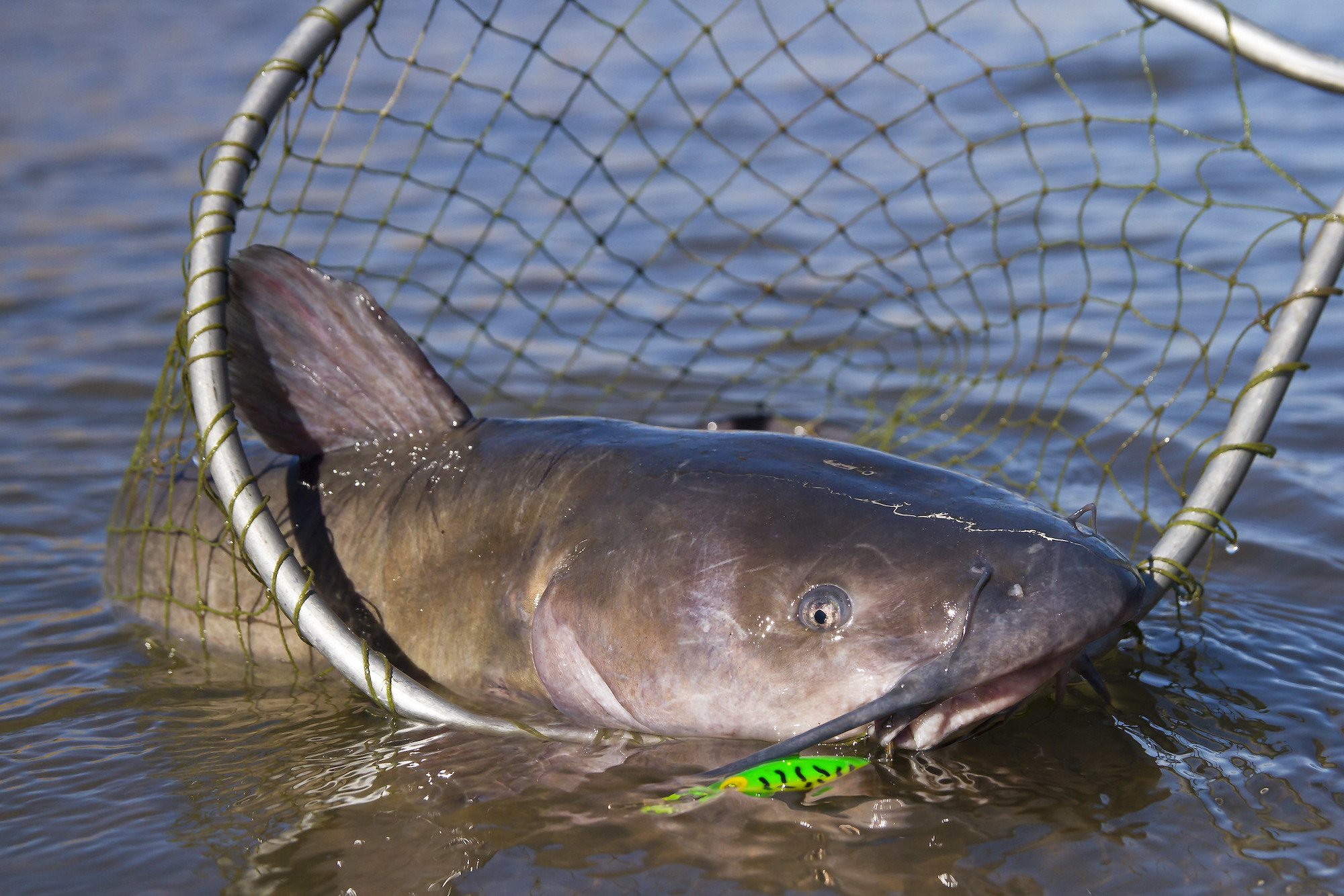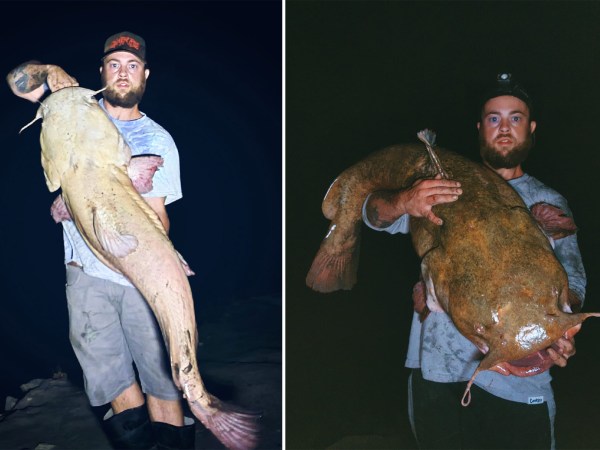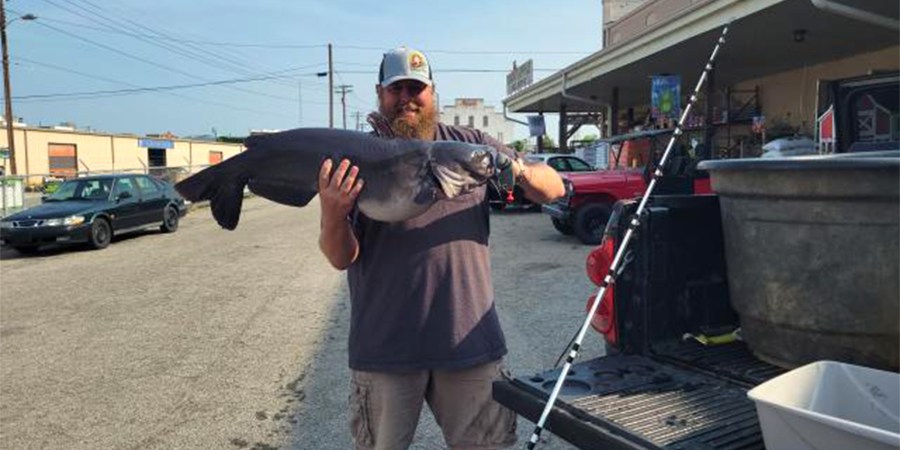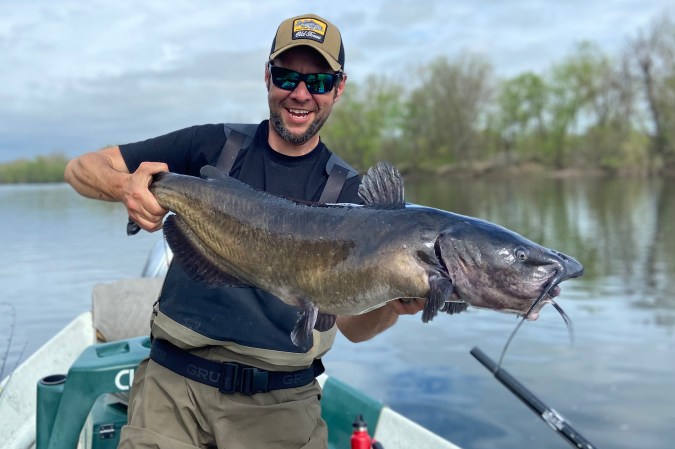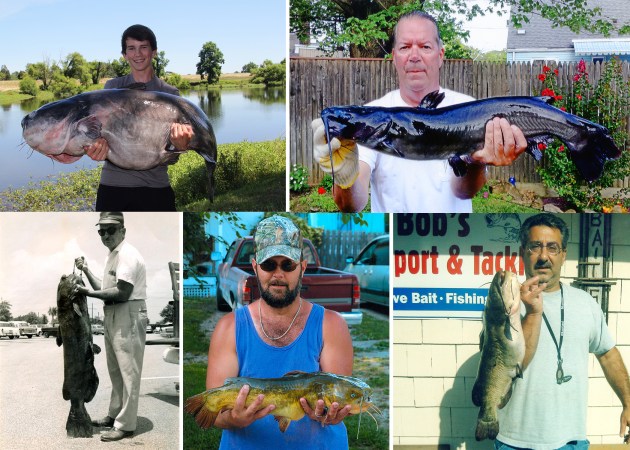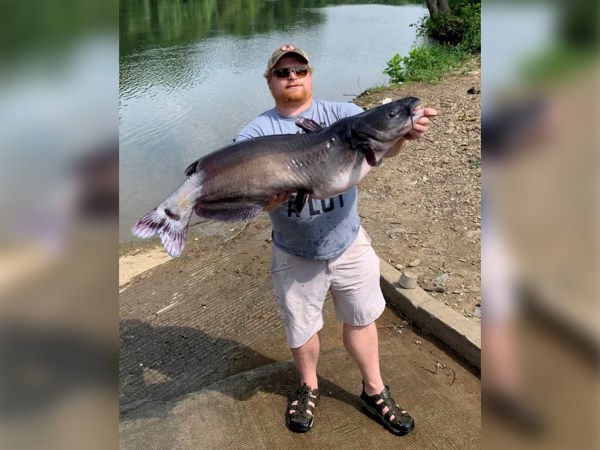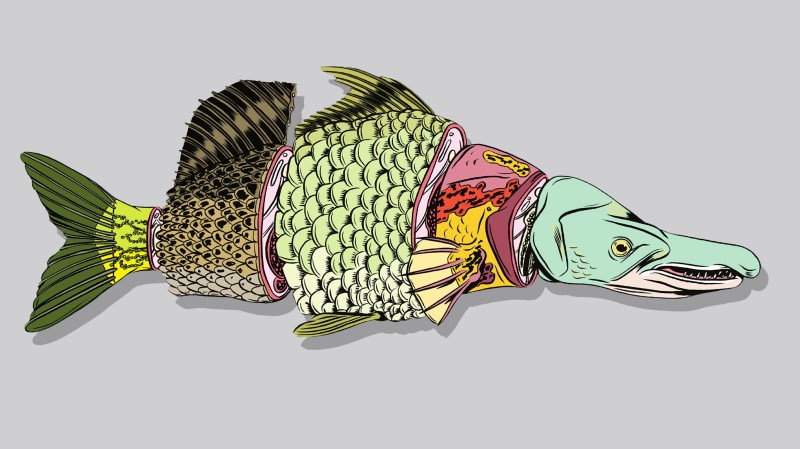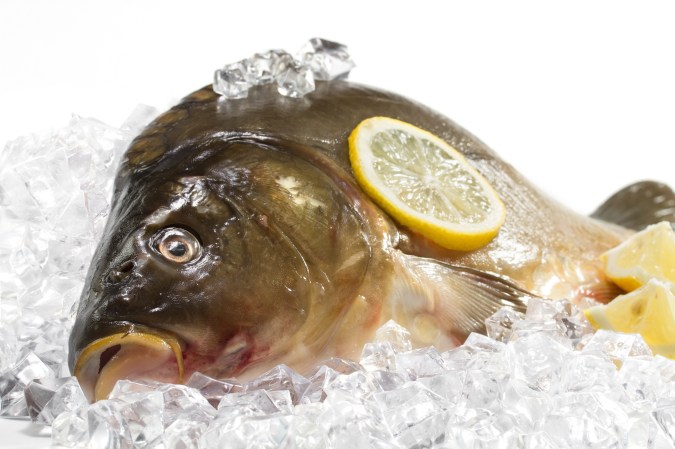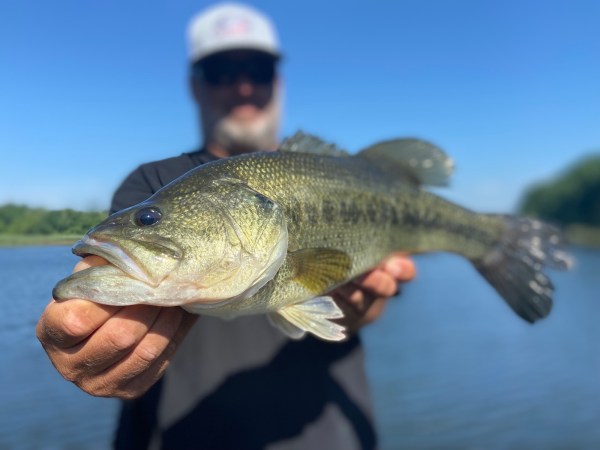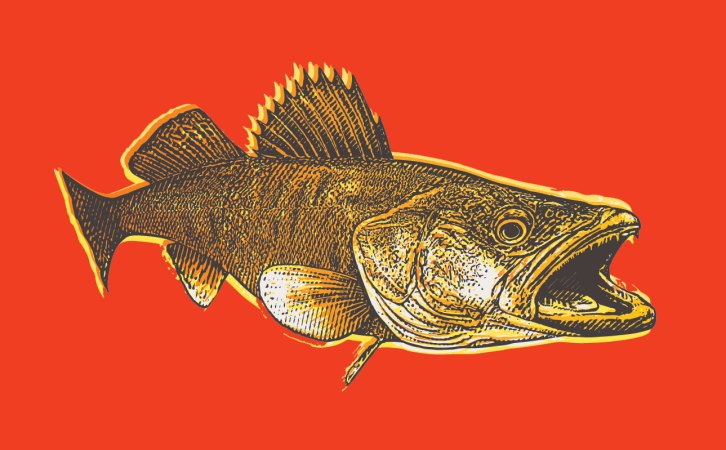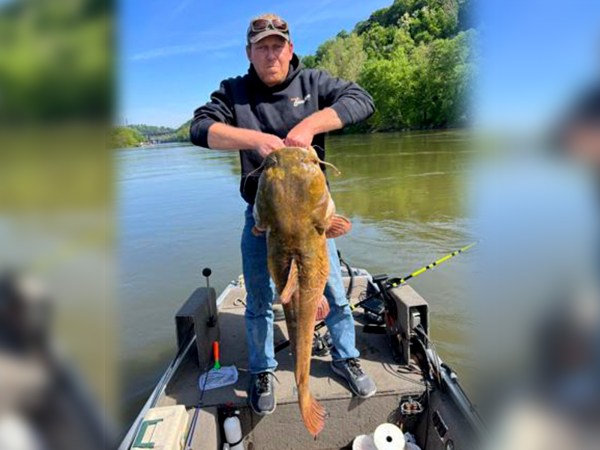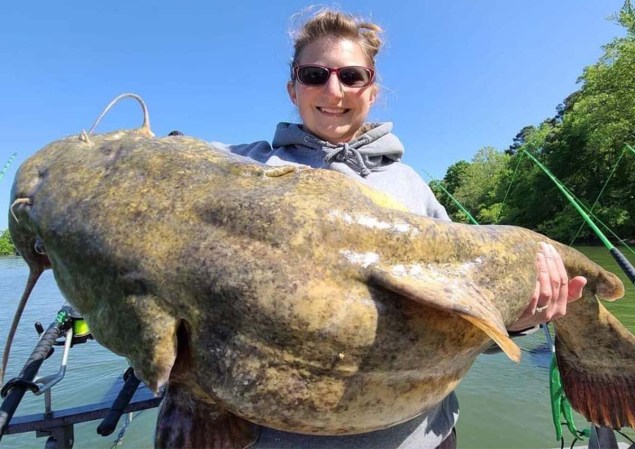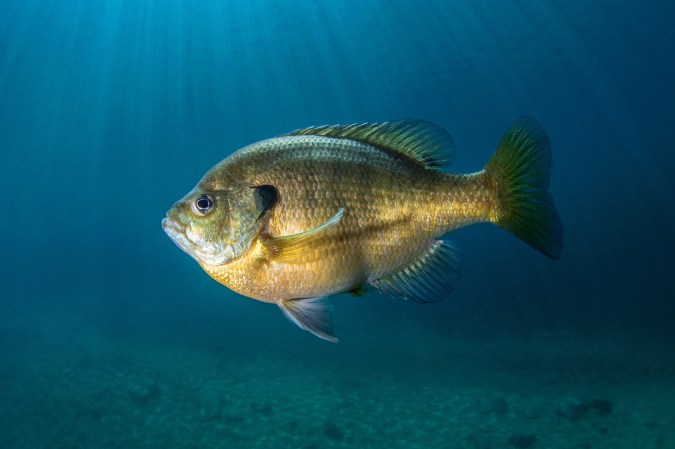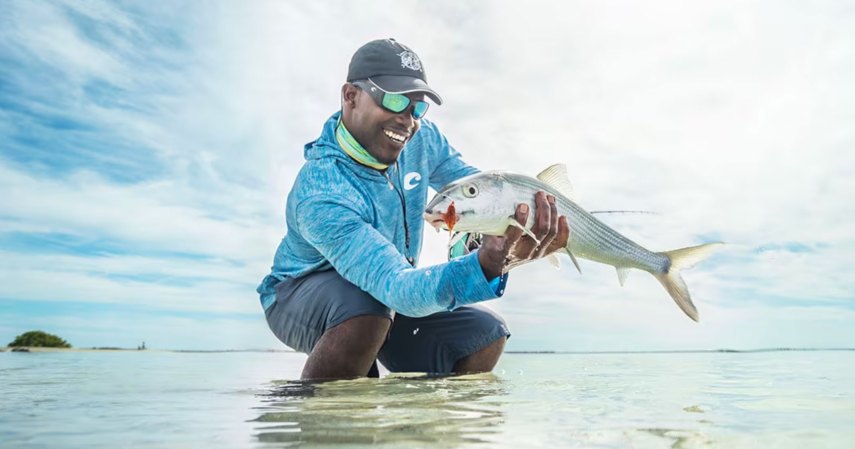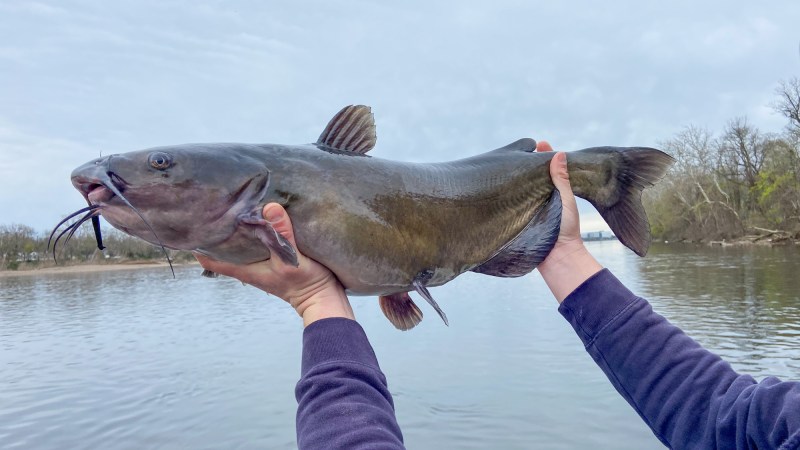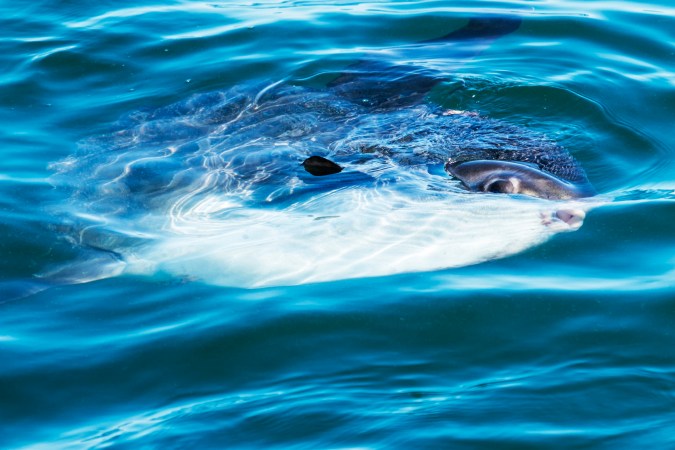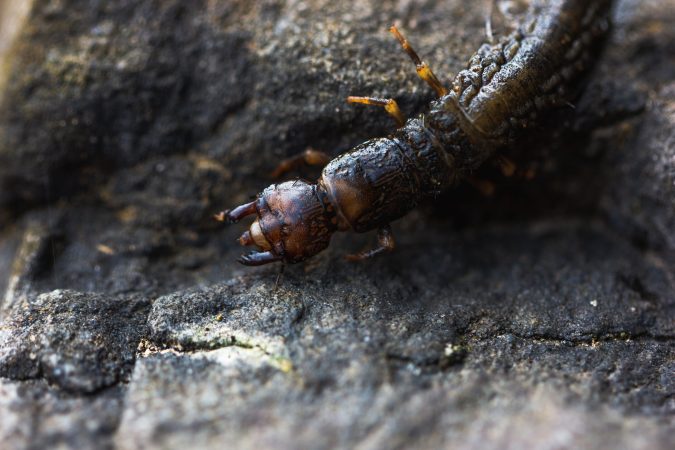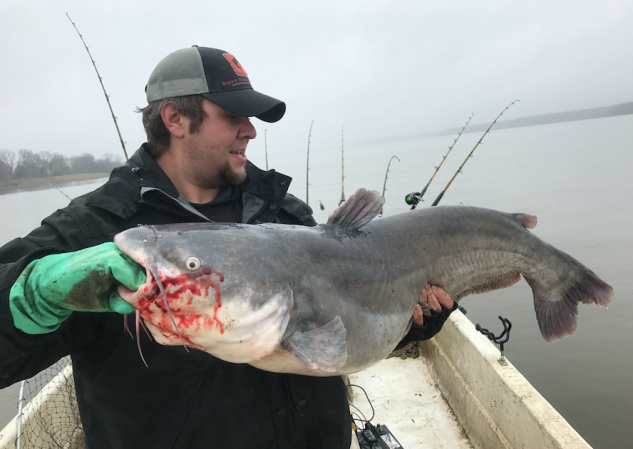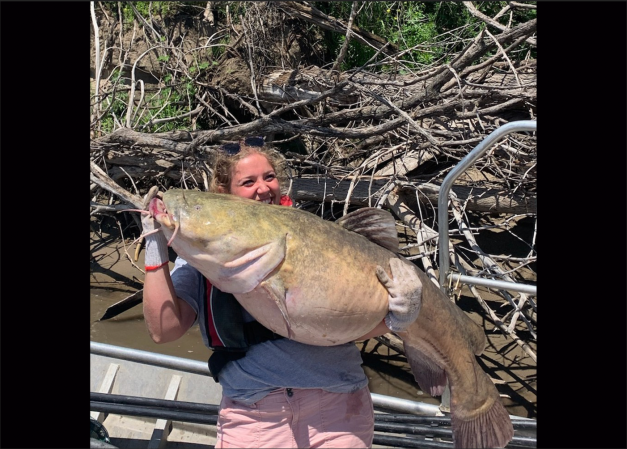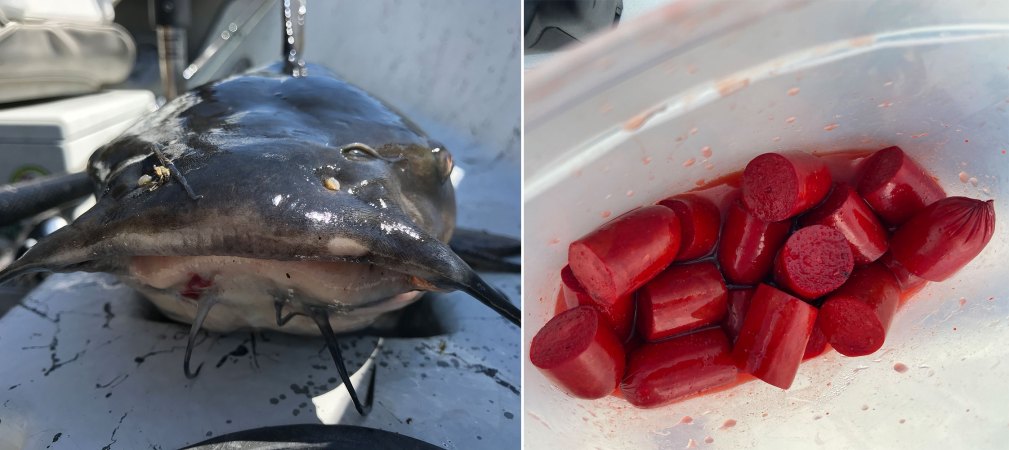If you’re wondering what catfish eat, the answer is just about anything. These fish are opportunists that feast on a wide array of food depending on what’s available. They’re both scavengers and predators, although certain species will focus more on live prey than others.
Understanding what catfish eat and how they feed will help you dial in a proper bait for different scenarios. Some of the most tried-and-true options for catching catfish are chicken livers, stinkbaits, nightcrawlers, live perch, and cut bait. These slimy bottom-dwellers aren’t known for their pickiness, however, and that’s good news for anglers looking to hook into a hefty one.
What Do Different Catfish Species Eat?
The North American catfish family includes 45 different species, according to the American Catfishing Association. These range vastly in size from less than a pound to well over 100 pounds, but they all have a few physical characteristics in common. They have leathery skin (without scales) that’s equipped with chemoreceptors, which give them a heightened sense of smell when looking for food. They also have barbels resembling a cat’s whiskers around their mouths that are equipped with taste receptors. When used together, these sensory organs help catfish find food in murky water and low-light conditions.
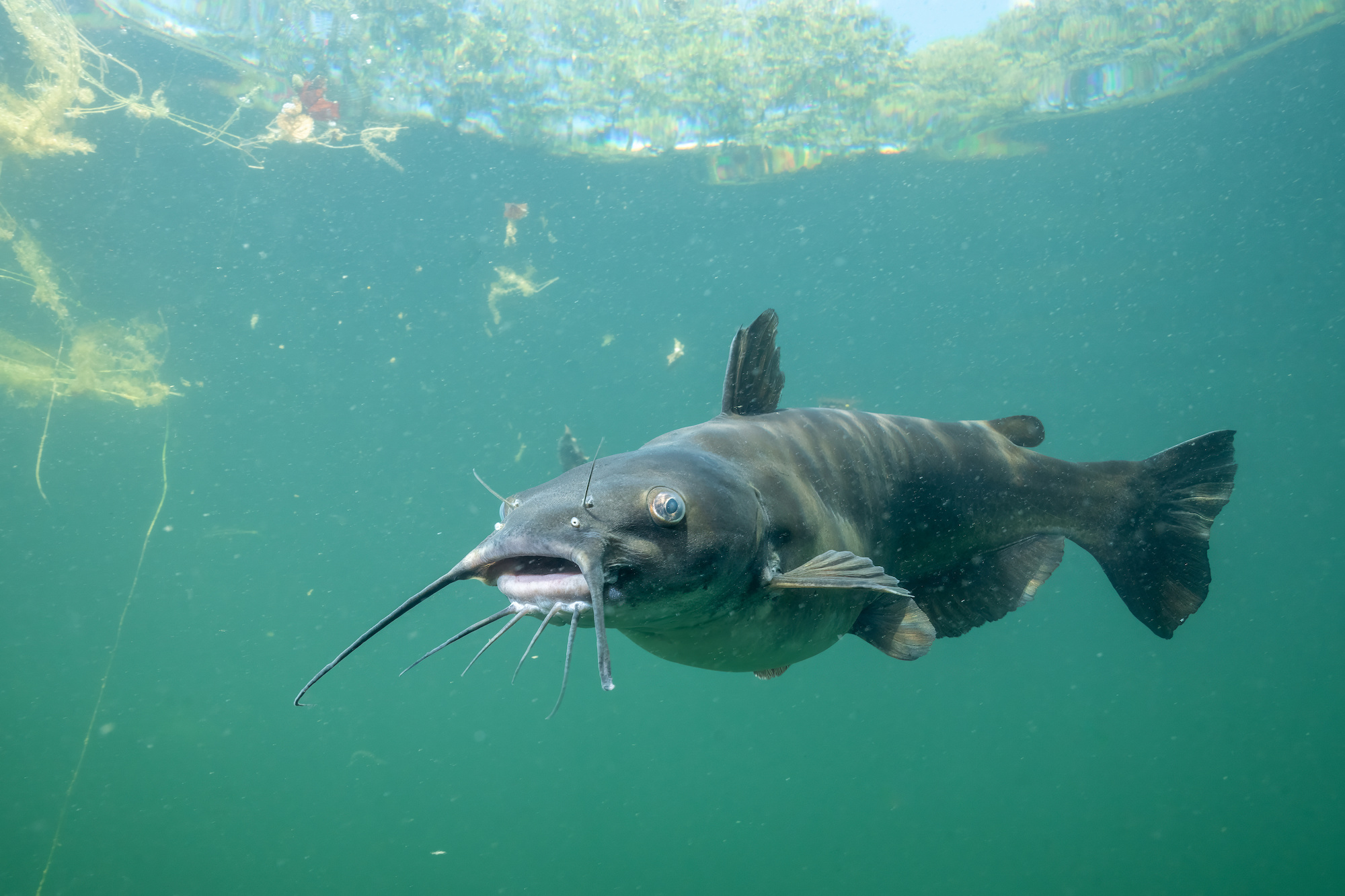
Griffin / Adobe stock
There two main saltwater catfish species that inhabit inshore waters along the Atlantic and Gulf coasts–hardhead catfish and gafftop catfish—but these fish are typically viewed as bycatch by many anglers.
For the purpose of this guide, we’ll focus on the four main freshwater catfish species that are targeted most frequently by North American anglers: flatheads, blues, channels, and bullheads. These fish mostly stick to the bottom of water bodies, but they’re not exclusively bottom feeders, and each species has its own preferred foods and feeding style.
Read Next: How to Catch Channel Catfish
Generally speaking, flatheads catfish are predators that like to ambush live fish. Blue and channel catfish are mostly scavengers that will also prey on other fish when given the opportunity. Bullheads tend to be more omnivorous and they feed on a wide variety of food sources, including plant matter.
“There’s so much different food that they can take advantage of,” Mike Jolley, fisheries biologist with the Tennessee Wildlife Resources Agency, tells Outdoor Life. “Where some fish are really specific with their diet, [catfish] are not. Because of that, they offer a really good opportunity for anglers.”
A catfish’s diet depends on what’s available, as well as the fish’s age and size. Younger and smaller catfish eat more invertebrates while adult catfish target more fish, according to Pennsylvania Fish and Boat Commission biologist Geoff Smith.
What Do Flathead Catfish Eat?
Flatheads are voracious meateaters that will seek out live prey. They’ll typically target perch and other small panfish, but they can also swallow fish like bowfin that are nearly as large as they are. They’ll even attack and eat some non-fish species like frogs, mice, and even ducklings. Megan Schall is an assistant professor of biology at Penn State-Hazleton who studies invasive flathead catfish in the Susquehanna River, and she says she once found a baby squirrel in a catfish’s stomach.
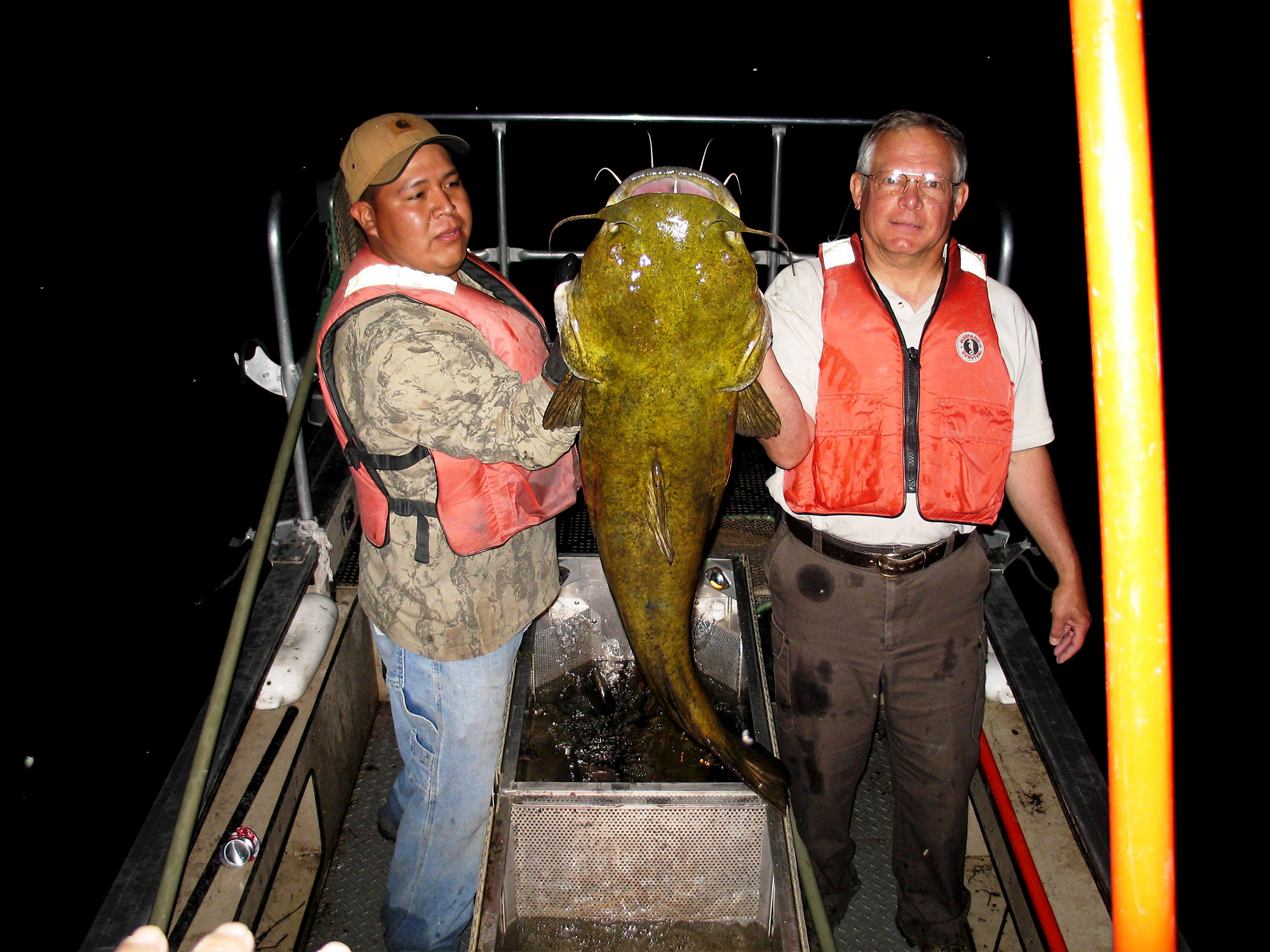
USFWS / Flickr
Otherwise, these fish are mostly piscivorous, and will eat a variety of species depending on what’s available in that watershed. Some of their main prey items include:
- Bass
- Bluegill and other sunfish
- Carp and suckers
- Herring and skipjack
- Mudfish
- Other catfish, including their own kin
- Shad
- White perch
Flatheads are a favorite of many anglers because they grow huge and fight hard. The biggest flathead ever recorded in the U.S. weighed 123 pounds, according to the IGFA.
In watersheds where flatheads are nonnative, however, their presence can be cause for alarm. Schall is currently researching flathead feeding behaviors in parts of Pennsylvania and the lower Chesapeake, while looking at the impact invasive flatheads have on native and recreational fish populations. In some areas, introduced flatheads are targeting threatened species. For example, Tim Bonvechio, a fisheries biologist for the Georgia Department of Natural Resources, once found a juvenile Atlantic sturgeon in the belly of a flathead.
What Do Blue Catfish Eat?
Blue catfish are the undisputed heavyweights of the American catfish family, and they can even outgrow flatheads. They can reach up to a staggering 65 inches and tip the scales at 150 pounds. Although they’ll prey on live fish, blues will also scavenge for invertebrates and dead fish, and they’ll occasionally pick up inanimate objects while feeling their way along the bottom. Bonvechio and his colleagues have found that blues favor mussels, mollusks, and asiatic clams in several watersheds. Other main food items include:
- Amphibians, snakes, and other small reptiles
- Birds
- Clams and mussels
- Crayfish and invertebrates
- Other catfish
- Shad
- Suckers
- Sunfish
What Do Channel Catfish Eat?
The average channel cat tips the scales at a modest 2 to 4 pounds, but they can surpass 40 pounds under the right conditions. They’re one of the most popular species for young and beginner anglers to target because they’re abundant and will eat a wide variety of baits.
This is because channel catfish are omnivorous and opportunistic by nature. Younger channel cats will eat a variety of plants, along with small invertebrates, insects, and mollusks. As they grow, they typically shift to a more carnivorous diet and will add more fish and crustaceans to their diet. Some of their favorite food sources include:
- Aquatic insects
- Aquatic plants
- Crayfish
- Invertebrates found in bottom substrate
- Mollusks and snails
- Smaller fish
What Do Bullhead Catfish Eat?
Bullhead catfish are often overlooked by anglers because they’re the smallest of the four main species, typically maxing out around 20 inches long. But for anglers who care less about size than they do catching fish, these fish are great to target. Like channel cats, they have a reputation as being easier to catch than a big blue or a giant flathead. These fish are efficient scavengers that spend most of their lives rummaging around the bottom. Their diet primarily consists of:
- Aquatic plants
- Crayfish
- Insects and insect larvae
- Fish eggs
- Leeches
- Minnows
- Snails
What Do Catfish Eat in Different Waters?
Catfish will adapt their diet to various environments, and they inhabit both rivers and stillwaters. They often rely on their keen sense of smell to feed during muddy, high-water events in rivers, or when hunting in murky lakes, reservoirs, ponds, and bayous.
Catfish are bottom dwellers, but they don’t feed on bottom 100 percent of the time. They’ll surface feed occasionally and can be caught throughout the water column.
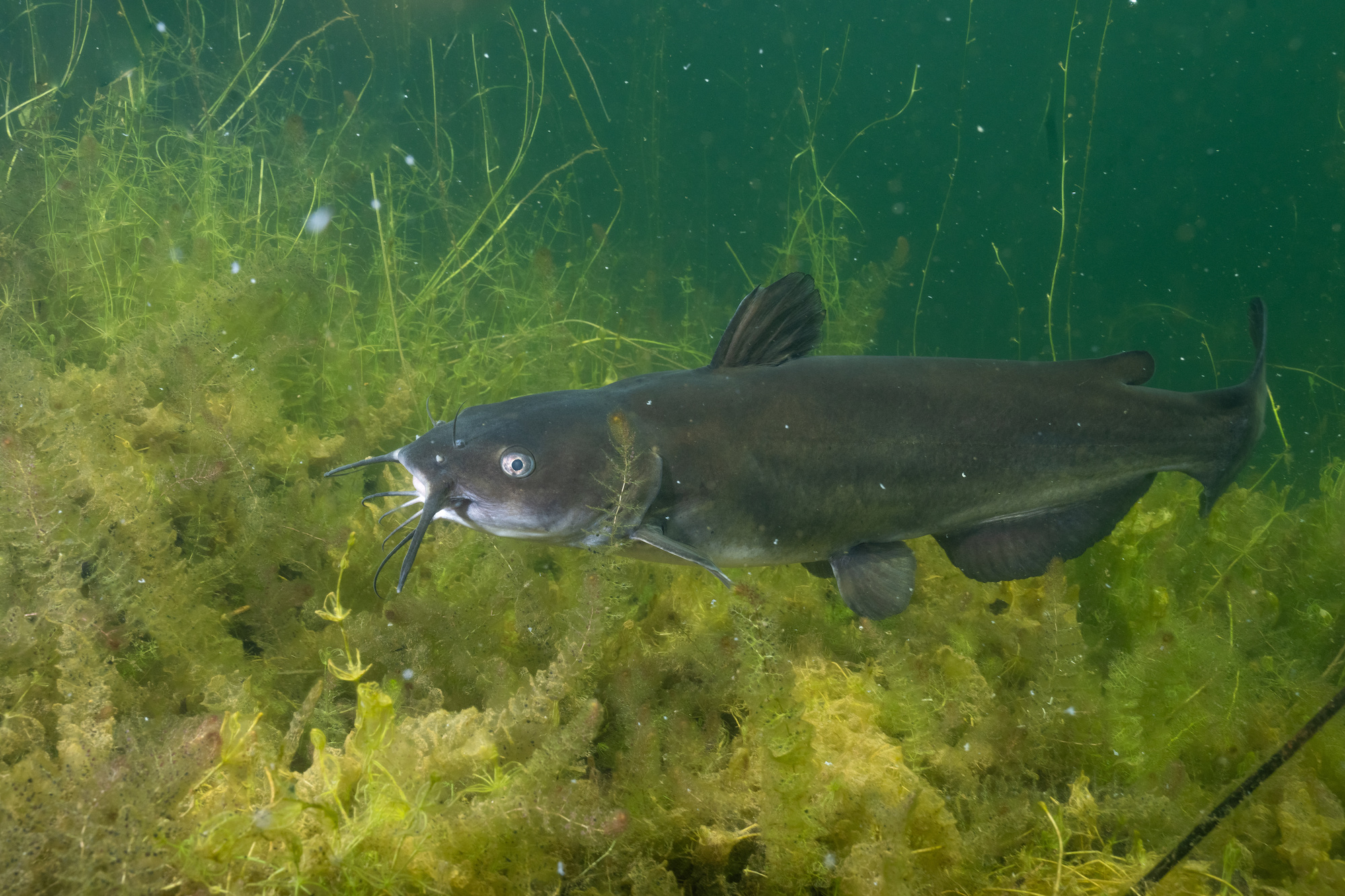
Griffin / Adobe stock
“A lot of times at night, they’ll come up into more shallow areas more toward the surface and feed,” Jolley says. “During the daytime, they tend to stay in those bottom areas.”
Most catfish in rivers are migratory. They tend to hold and feed in long, deep pools and slackwater eddies. Flatheads like to hide behind structure and boulders in large rivers and reservoirs to ambush other fish. Channel catfish prefer open river channels, but they also do well in stillwaters. Bullheads primarily inhabit lakes, ponds, and reservoirs, but they can be found in some rivers as well.
River catfish will move in and out of currents to feed on anything that swims or drifts by, often using high-water events to indulge in a feeding frenzy. In ponds and lakes, catfish typically hunt for their food along the bottom.
The Role of Water Temperatures in a Catfish’s Diet
Just like all other cold-blooded species, a catfish’s appetite will change depending on temperatures. When water temps are warmer, their metabolism kicks into high gear and they need a lot of food to stay fueled.
“The warmer they are, the higher their metabolism, and the more they’re going to eat,” Smith says. “They’re not very thermally stressed, so they’re gonna be eating out more frequently at the upper end of that temperature range.”
As the water temperatures drop, their feeding activity tapers off as they’re unwilling to move far to chase down a meal. When fishing in Tennessee, Jolley says he’s found piles of blue catfish inhabiting the same pools in the river, all looking for food that comes by that they can snatch without expending much energy.
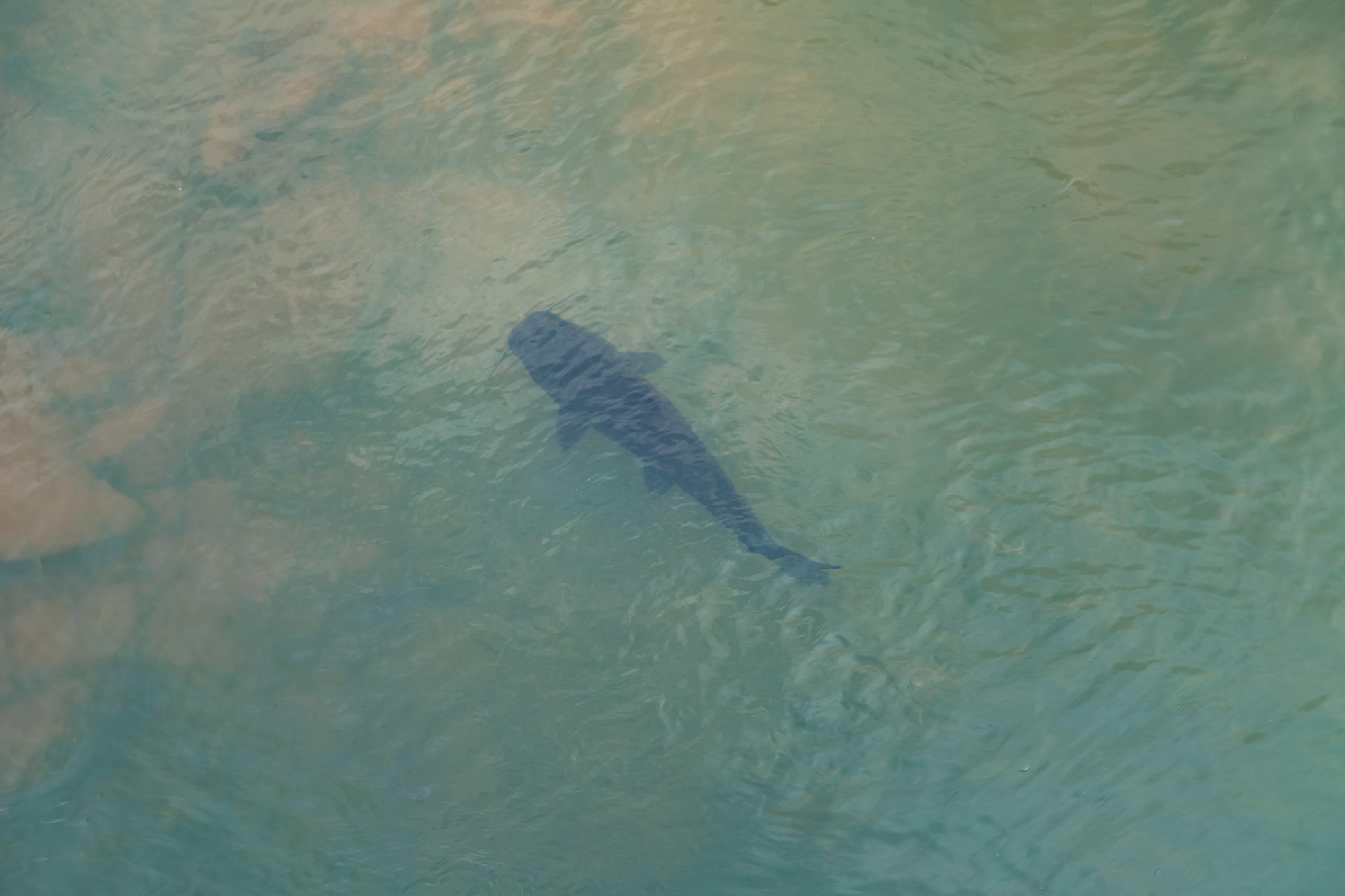
edojob / Adobe stock
If you’re wondering how to catch catfish in winter, Trone says he often focuses on shallow water, which is warmed more quickly by the sun. He caught his Georgia state-record blue in October and says he tends to catch more big fish in the winter when they concentrate in the shallows.
Fishing for catfish during the wintertime is much tougher the further north you go. In northeastern states, their metabolism will shut down almost entirely during the winter months as they rely on fat reserves built up over the rest of the year.
The Best Baits and Lures for Catfish
The options for catfish bait are as varied as their diets, but it’s always best to think about what the main food sources are in the water body you’re fishing. What you put on your hook can also determine what kind of catfish you’ll catch.
When targeting bullheads, a nightcrawler fished on the bottom is sometimes all you need. Channel cats can be caught on simple baits like white bread, cheese, or chicken gizzards, but as a rule of thumb, the smellier the bait the better. Especially in warmer water, where smells disperse more quickly. There are all sorts of different stinkbaits that can be bought at a bait shop or made at home. One of the simplest and effective homemade recipes consists of hotdogs soaked in Kool-Aid.
Read Next: Hotdogs are the Best Bait for Catching Summertime Channel Catfish
If you’re looking to tangle with the larger catfish species, using live or cut bait is often a better way to go. Some anglers prefer live bluegills, while others, like Florida angler Tim Trone, swear by fresh cut bait for the biggest flatheads and blues.
Trone holds multiple catfish records, including the Georgia state record for blue catfish, which weighed 111 pounds. His strategy is simple but effective: Use what the catfish are feeding on in their habitat. He also says freshness is key. When prepping for tournaments, Trone stocks up on shellcrackers, bluegills, and other small sunfish. He also tries to only use bait caught from the same water he’s targeting catfish in.
“I’ve noticed they’re not as hot about the bait you bring as the bait that’s fresh,” Trone says. “You may catch a bluegill in another stretch of water and catch a bluegill on that water and they’ll like that bluegill from their water better than the ones you brought with you.”
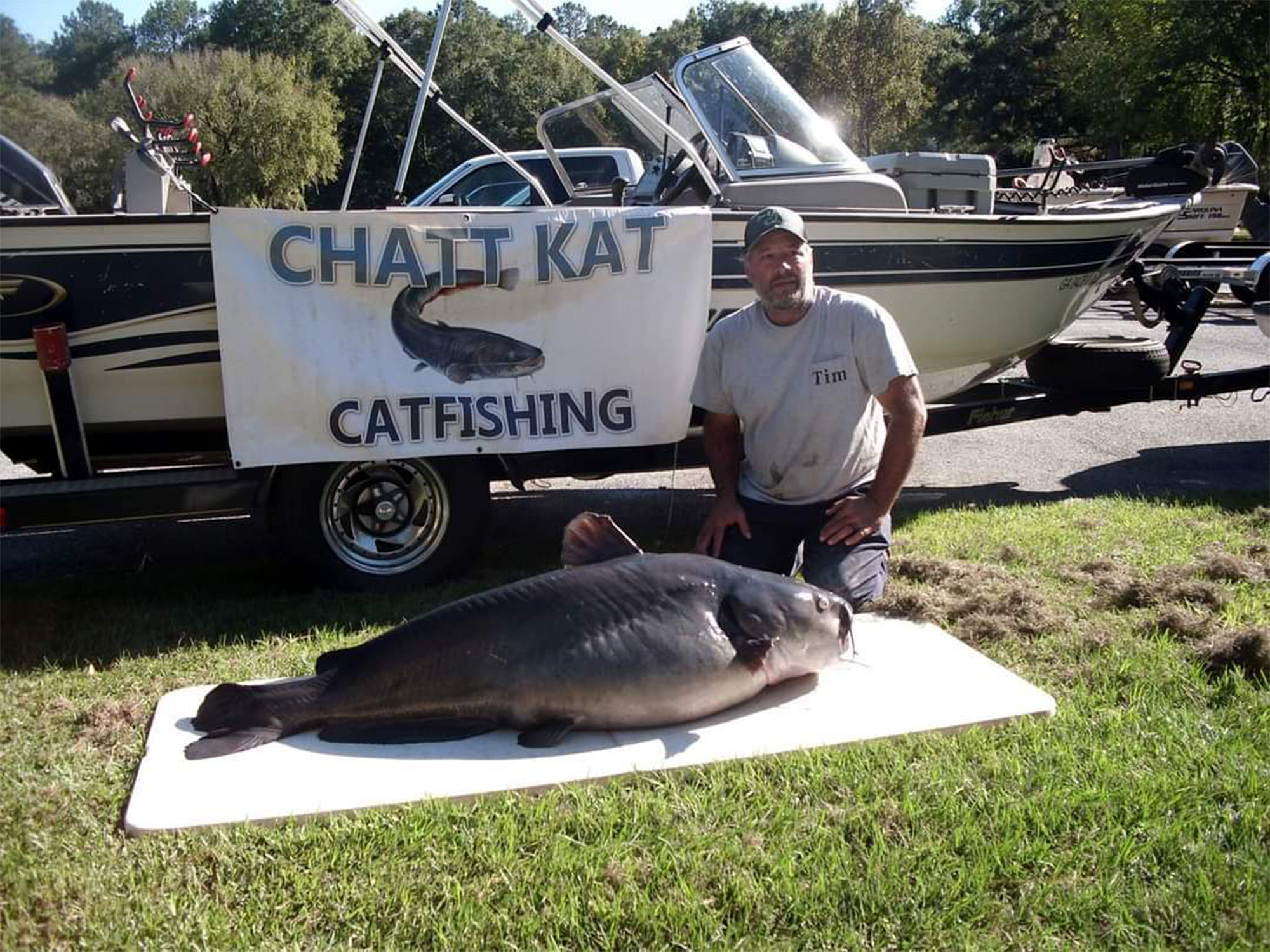
Courtesy Tim Trone
Getting your baits down deep is important no matter what species you’re targeting. Sliding sinker rigs are easy to use and very effective on both flatheads and blues, though Trone says he often runs a santee rig. It also helps to have one of the best catfish rods in your arsenal. Or, for a true hands-on experience, you can try noodling for catfish. This involves feeling along the bottom with your bare hands and using your wiggling fingers as bait.
At the end of the day, Trone says, catching catfish is all about trial and error.
“You’ve got to go out and try. If it ain’t working, try something different.”
What Do Catfish Eat: FAQs
Factors like location and time of year will affect how much catfish eat. But in general, the larger the catfish, the larger its appetite.
Catfish are opportunists, so the timing of when they eat often revolves around whenever the chance arises. According to Jolley, these whiskered fish don’t necessarily need to chow down daily. If they’ve had a hearty meal, they might skip a day or two. However, Jolley says it’s safe to say most catfish are probably actively feeding most days, especially the larger fish that require more energy every day, or when the water heats up and their metabolism shifts into high gear.
Catfish rely on their sense of smell to eat, so they’re naturally attracted to smellier things. Eyesight plays a secondary role, especially for flatheads in pursuit of fish. But primarily, it’s the scent of the food source that lures catfish in.
Final Thoughts on What Catfish Eat
Understanding what catfish eat is about tapping into their adaptable and opportunistic feeding habits. Seasonal changes, varying aquatic environments and available forage all play a significant role in shaping a catfish’s diet. With their superior sense of smell, catfish navigate and forage in murky waters, often using high-water events in rivers or scavenging the pond bottoms for a meal.
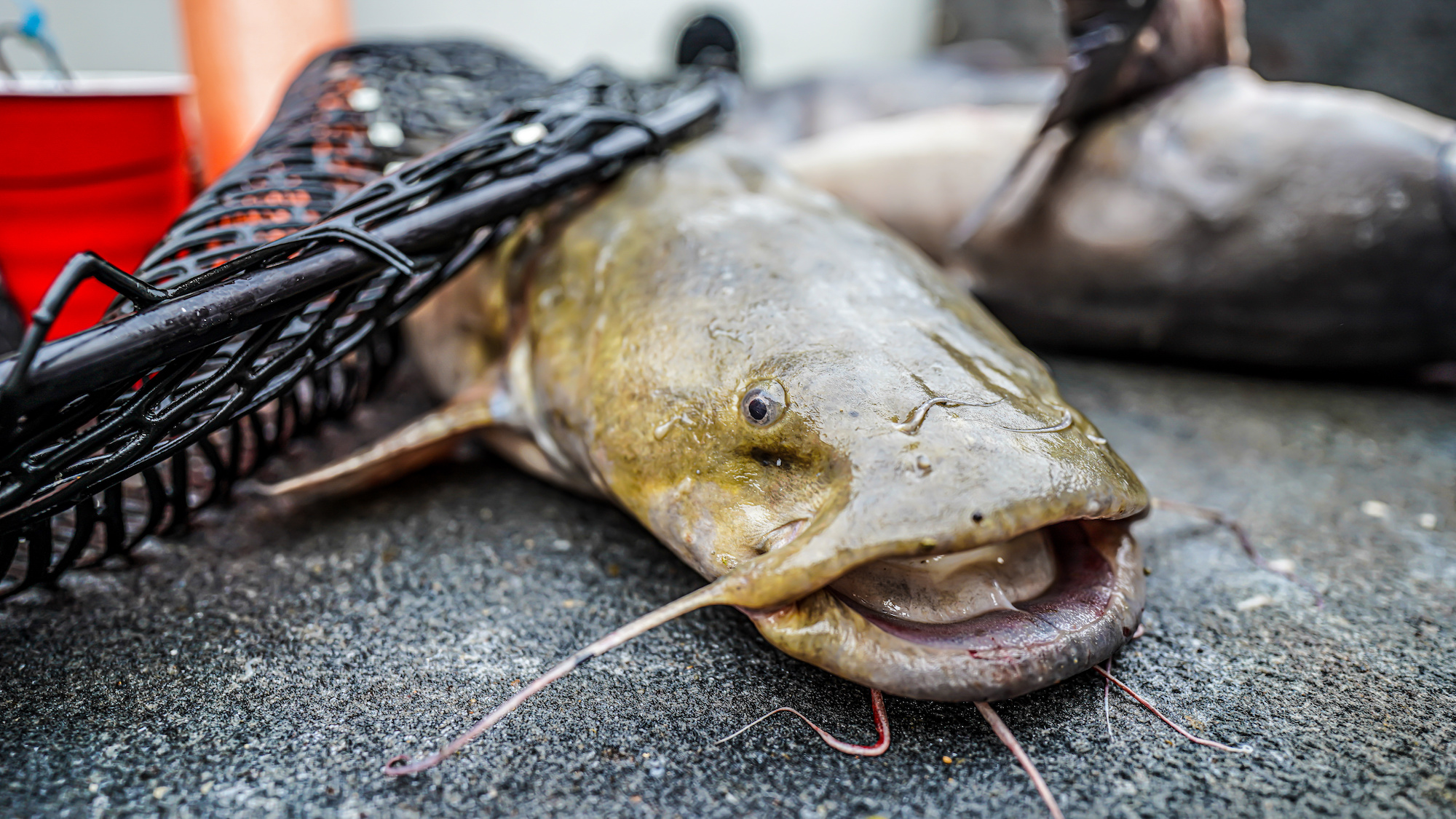
Cole / Adobe stock
Whether it’s the predatory flatheads waiting to ambush live prey, adaptable blues feasting on anything from small invertebrates to other fish, or bullheads scavenging the bottoms of ponds and lakes, catfish are masters of making the most of their surroundings.
For anglers looking to land a giant catfish, success hinges on understanding their dietary habits and mimicking what they’re inclined to eat in their habitat. The next time you’re on the water, embrace the catfish’s approach: Adapt to your surroundings and don’t be afraid to try something different.
